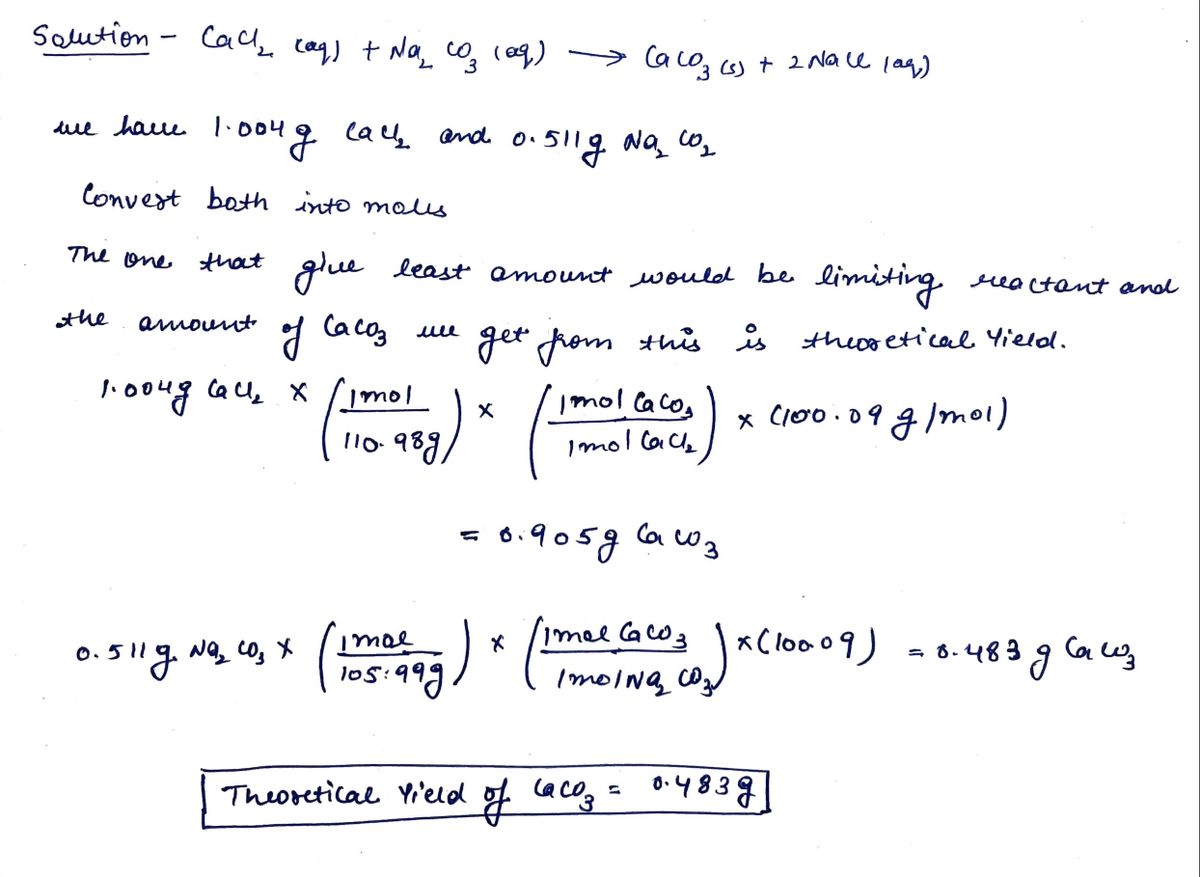1)What is the theoretical yield (in grams) of CaCO3 in the precipitation reaction that occurs when when a solution prepared by dissolving 1.004 g of solid CaCl2 in 30 mL of water is mixed with a solution prepared by dissolving 0.511 g of Na2CO3 in 30 mL of water? Include the appropriate number of significant figures in your answer. 2)Suppose that 0.326 g of CaCO3 is actually isolated in the precipitation reaction described in Question 17. What is the percent yield of this reaction? Report your answer to the correct number of significant figures.
Thermochemistry
Thermochemistry can be considered as a branch of thermodynamics that deals with the connections between warmth, work, and various types of energy, formed because of different synthetic and actual cycles. Thermochemistry describes the energy changes that occur as a result of reactions or chemical changes in a substance.
Exergonic Reaction
The term exergonic is derived from the Greek word in which ‘ergon’ means work and exergonic means ‘work outside’. Exergonic reactions releases work energy. Exergonic reactions are different from exothermic reactions, the one that releases only heat energy during the course of the reaction. So, exothermic reaction is one type of exergonic reaction. Exergonic reaction releases work energy in different forms like heat, light or sound. For example, a glow stick releases light making that an exergonic reaction and not an exothermic reaction since no heat is released. Even endothermic reactions at very high temperature are exergonic.
1)What is the theoretical yield (in grams) of CaCO3 in the precipitation reaction that occurs when when a solution prepared by dissolving 1.004 g of solid CaCl2 in 30 mL of water is mixed with a solution prepared by dissolving 0.511 g of Na2CO3 in 30 mL of water?
Include the appropriate number of significant figures in your answer.
2)Suppose that 0.326 g of CaCO3 is actually isolated in the precipitation reaction described in Question 17. What is the percent yield of this reaction?
Report your answer to the correct number of significant figures.

Trending now
This is a popular solution!
Step by step
Solved in 3 steps with 2 images









